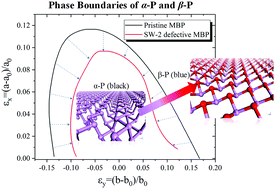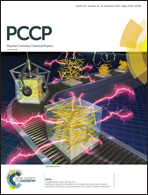Strain and defect engineering on phase transition of monolayer black phosphorene
Abstract
The phase transition of monolayer black phosphorene (MBP, α-P) to β-P and γ-P is explored by density functional theory (DFT) calculations and molecular dynamics (MD) simulations using reactive force fields. It is found that MBP can convert to a mixed phase of β-P and γ-P under biaxial strain, while the Stone–Wales defect (SW-2) in MBP can serve as an excellent ‘phase transition catalyzer’, significantly decreasing the critical strain for phase transition and increasing the homogeneity of the phase transition. The biaxial strain state (i.e. the strain components in the armchair and zigzag direction) and loading mode (i.e. the proportional and staged loading) have significant effects on the phase transition of MBP. In general, the phase transition of MBP is driven by the tension strain in the armchair direction, but large tension or compression strain in the zigzag direction can also promote the phase transition. Besides, MBP has a larger fracture strain under staged loading, generating a more uniform phase transition structure. The effects of curvature and SW-2 defect concentration on the phase transition of MBP are also studied, which shows an easier phase transition for a larger curvature and higher SW-2 defect concentration. The systematic results presented herein provide useful insights for designing and tuning the structure of MBP through phase transition facilitated by strain and defect engineering.



 Please wait while we load your content...
Please wait while we load your content...
